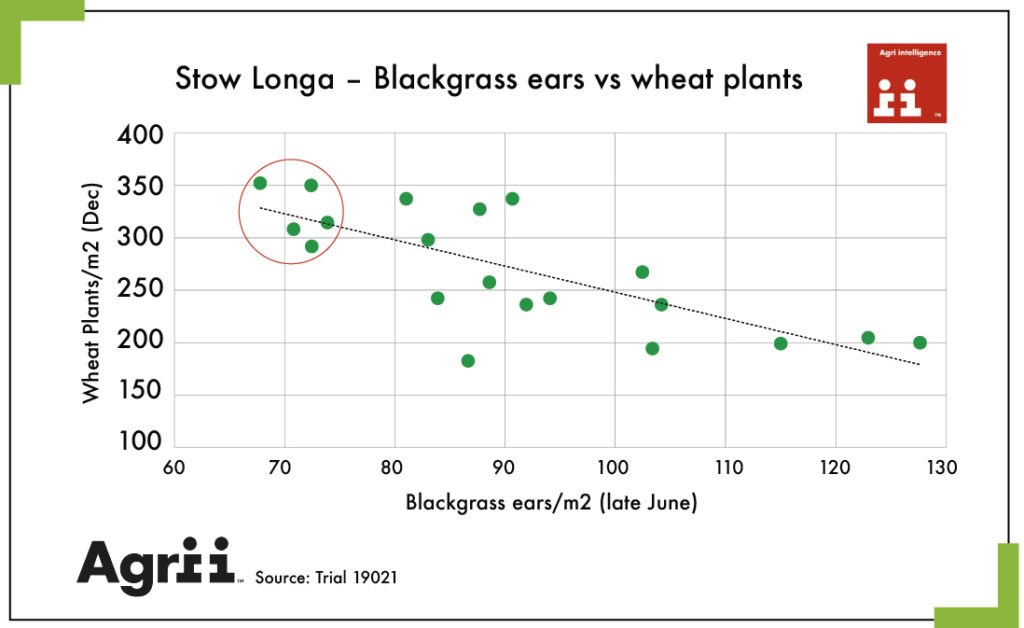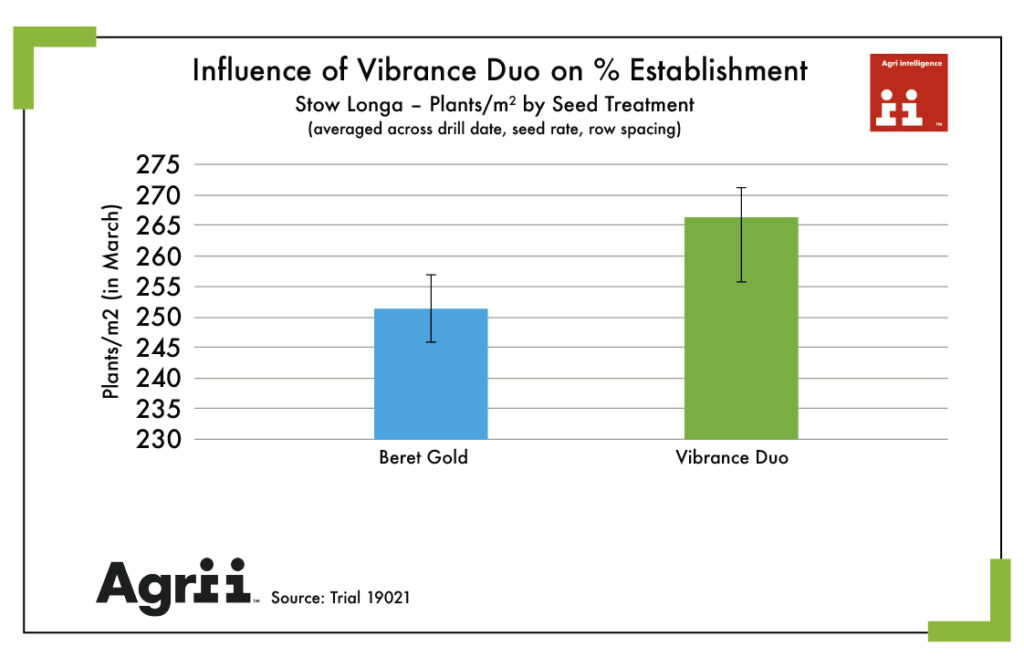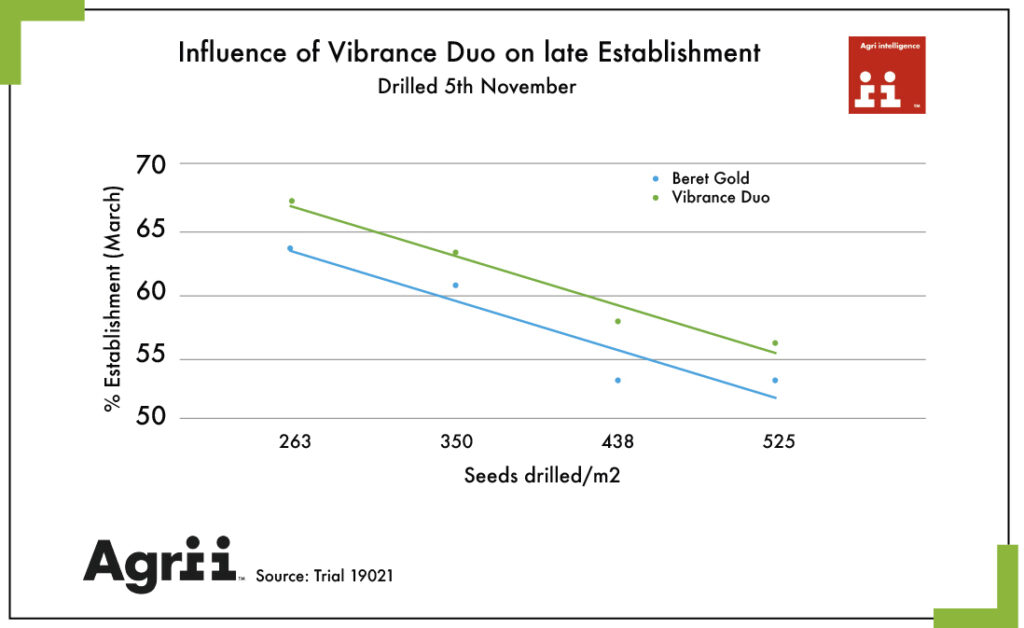The site has improved our understanding of the competitiveness of different crop species. Winter wheat has been shown to be consistently less competitive than other species, and differences exist in the relative competitiveness between varieties. LG Tapestry, LG Astronomer, RGT Bairstow, and Skyfall have been picked out as more competitive varieties, with SY Gleam and KWS Cranium being less competitive than the rest.
In addition, early work showed that 300 to 350 plants/m2 was needed in the spring to optimise crop competition against blackgrass in later drilled crops (Figure 1).

Figure 1: Wheat plant density compared to blackgrass ears at Stow Longa.
Vibrance Duo (fludioxonil and sedaxane) is known to improve crop establishment, rooting, and above-ground biomass. A trial was carried out to see if it could contribute to the crop’s competitiveness against blackgrass.
Vibrance Duo was applied at a range of seed rates and compared with a base treatment alone and different row spacings and drilling dates. The results showed a significant improvement in establishment (Figure 2).

Figure 2: Comparison of seed treatments, measuring crop establishment.
Interestingly, the trial also revealed that as you increase the seed rate, the percentage establishment falls away due to the increased plant-to-plant competition between wheat plants in the autumn (Figure 3). Vibrance Duo achieved this by producing more resilient plants at these elevated seed rates.

Figure 3: Comparison of seed treatments and seed rates, measuring the percentage of crop establishment.
The trial showed that Vibrance Duo could save up to 6% of seed costs by improving crop establishment in the spring compared with the base treatment alone. In late drilling situations, Vibrance Duo, therefore, becomes a very cost-effective treatment.


